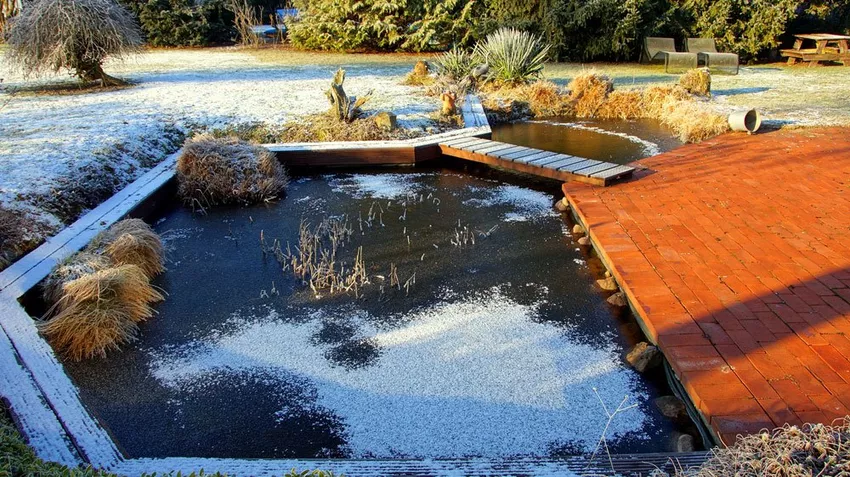If you own a garden pond, you should prepare it for winter in the fall. We have 6 tips for you on what you should consider.

When temperatures drop in autumn, it's time to prepare the garden for winter. Anyone who owns a garden pond must also take precautions for the cold season here so that the plants and any animals that may be present survive the winter well.
We have six tips for you on how to prepare your garden pond for winter in no time.
Tip 1: Remove the pond pump
If the temperatures drop, the pond pump may be damaged if you leave it in the pond. For this reason, it is advisable to switch off the pump in autumn and to store it in a dry and safe place.
Tip: If you have a frost-resistant pump, you can leave it in the pond over the winter. In this context, it is best to always observe the respective manufacturer's information.
Tip 2: Store pond decorations
Many pieces of equipment used for pond decorations, such as fountains and the like, are also not ice-resistant. Here, too, it is important to store these pond accessories until spring and only reinstall them when the temperatures rise.
Tip 3: Cut back plants
Dead plants do not look nice and can also have a negative impact on the water quality. Autumn is therefore the perfect time to cut off the leftovers. It is best to use a landing net and, depending on how far the plants have spread, pond scissors.
Tip: Also cut back any reed belts or at least thin them out.
Tip 4: Remove leaves from the water surface

In addition to dead plants, it is also important to remove leaves that have settled on the water surface over time. Otherwise there is a high risk that so-called "sludge" will form at the bottom of the pond, which will stimulate the growth of algae.
Tip 5: Check the pond for sludge
Should be on the bottom of the pondIf there is little digested sludge, you should definitely desludge the pond before winter. Because it can, among other things, promote the formation of sulfur gas. This would then be distributed in the water.
To safely remove the mud, all you really need is a bucket with a handle. If you want to be a little more user-friendly and comfortable, simply opt for a pond vacuum like this one:
Tip 6: Use ice preventer
Fish in hibernation have fewer demands when it comes to oxygen and winter food intake. During hibernation they retreat to the bottom of the pond. It is now important for the pond owner to ensure a he althy distribution of oxygen. Furthermore, it is essential that the concentration of the digester gas does not exceed a certain (low) value.
In this context, an ice preventer ensures that the ice cover on the pond cannot freeze completely and prevents the most classic problems of pond maintenance in winter.
Tip: If you underestimated the temperatures at night and have not yet used an ice preventer, the pond may freeze over. In this case, avoid punching a hole in the ice corner. Because the resulting pressure can disturb the peace of the animals. It is therefore better to use a hair dryer to remove the ice from a specific area.
If you follow the above tips, nothing stands in the way of a he althy winter for the pond and its inhabitants!